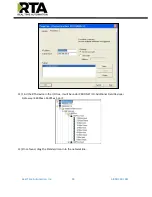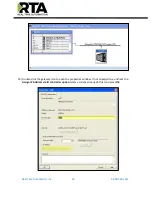
Real Time Automation, Inc.
37
1-800-249-1612
Example 1: 8 Bit Int, I Address, Byte 10, Offset 0, with # of Points 5 will read memory addresses IB10 to
IB14.
Example 2: 16 Bit Int, Q Address, Byte 10, Offset 0, with # of Points 5 will write memory addresses IW10
to IW19. Address 10-11 will be first 16-bit int, 12-13 will be the second 16-bit int, etc.
Example 3: 32 Bit Float, I Address, Byte 10, Offset 0, with # of Points 5 will read memory addresses ID10
to ID29. Address 10-13 will be first 32-bit float, 14-17 will be the second 32-bit int, etc.
Example 4: 16 Bit, DB5 Address, Byte 10, Offset 0, with # of Points 5 will read memory addresses of
DB5.DBX10. Address DB5.DBX10 will be first 16 bit, DB5.DBX12 will be next, etc.
Terminology Note and Example:
I addresses refer to input, Q addresses refer to output, %B refers to
bytes and %W refers to words %D refers to DWord. Example, %IB68 would be used to read the byte
offset based on the number of points. If reading a input/output for Bool, the bit offset would read
the bit. Example, %I68.0 - %I68.7 or %Q68.0 - %68.7
















































